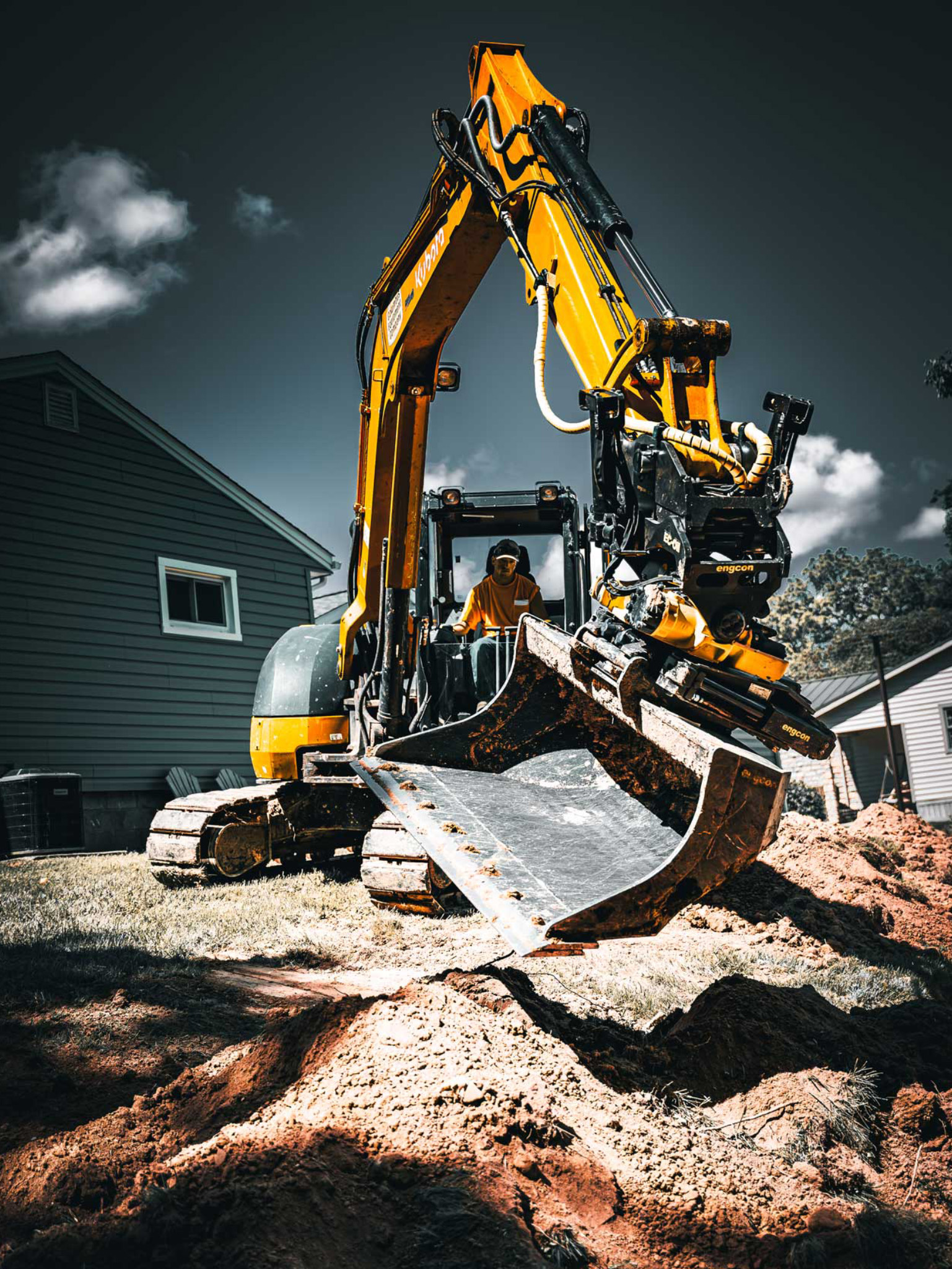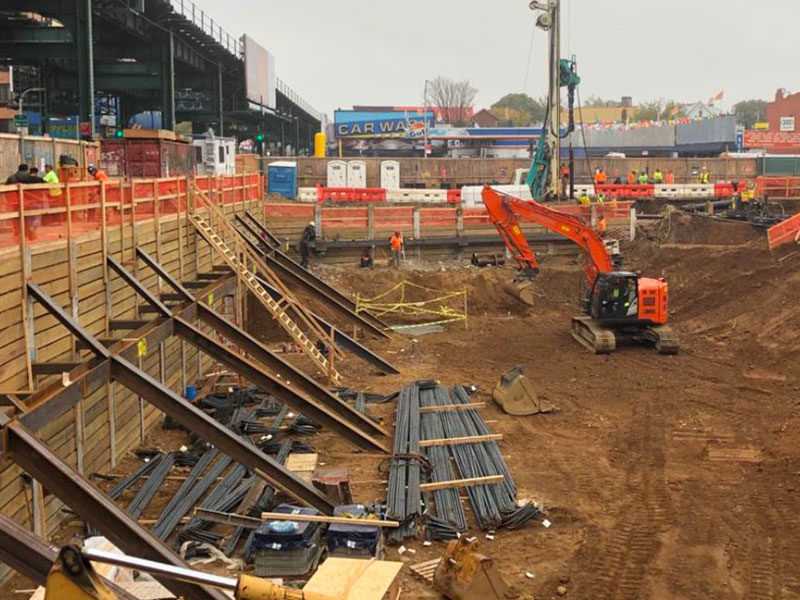Unveiling the Art of Excavation: Pro Tips for Safe and Productive Excavating
In the world of excavation, the proficiency of safe and productive digging is an art kind that needs precision, understanding, and adherence to recognized techniques. As soil is transformed and planet is relocated, the ins and outs of excavation reveal themselves, demanding an eager understanding of equipment, dirt structure, security methods, and ecological considerations. The proficiency needed to navigate these aspects successfully can suggest the distinction between an effective excavation job and a prospective disaster. By unwinding the layers of this elaborate process, a globe of understandings and approaches waits for those looking for to boost their excavation abilities to brand-new elevations.
Relevance of Proper Tools
To guarantee the security and performance of any excavation project, using the ideal equipment is paramount. Excavation tasks vary in extent and intricacy, ranging from tiny residential landscape design work to large construction endeavors.
Excavators are essential items of machinery in any digging operation. These flexible makers can be found in different sizes to fit different job demands. Tiny excavators are optimal for smaller sized jobs, while larger excavators deal with more comprehensive jobs successfully. Backhoes are an additional necessary devices type, integrating the functions of a loader and an excavator in one device. They are useful for jobs needing adaptability and ability to move.
Excavators stand out in jobs that need pushing huge amounts of dirt or particles. By spending in the ideal devices, excavation jobs can be completed safely, on time, and with accuracy.
Comprehending Soil Make-up
An extensive understanding of dirt structure is fundamental for executing excavation jobs with accuracy and safety. Comprehending the various kinds of dirt is crucial as it directly impacts excavation techniques, equipment selection, and overall job efficiency. Dirt structure commonly includes four primary components: sand, silt, clay, and natural issue. Each part has unique residential properties that affect how dirt reacts to excavation processes.
Silt bits are smaller sized than sand yet bigger than clay, providing modest drainage and communication. Organic issue, such as decomposing plant product, impacts dirt fertility and security.
Prior to commencing excavation, carrying out dirt tests to establish its make-up and features is vital. This information helps in picking the appropriate devices, executing precaution, and establishing excavation techniques customized to the certain soil problems - lancaster trenching. By understanding dirt structure, excavation specialists can boost job outcomes while making sure safety and adherence to finest practices
Safety Measures and Methods
Recognizing dirt composition is the keystone whereupon precaution and protocols for excavation tasks are developed, making certain the well-being of workers and the success of the endeavor. There are a number of vital steps that need to be applied to reduce dangers and protect against crashes. when it comes to safety during excavation.
Firstly, prior to any digging begins, a comprehensive assessment of the website should be conducted to determine any kind of potential hazards such as below ground energies, unpredictable dirt problems, or nearby structures that might present a threat. It is essential to have a proficient individual supervise the excavation process to guarantee that all security procedures are complied with purely.
Additionally, all workers involved in the excavation must be properly trained in secure excavating techniques and the appropriate operation of devices. By adhering to these security steps and protocols, excavation tasks can be finished effectively and without occurrence.
Effective Excavation Planning
When starting an excavation task, careful preparation is necessary to make sure performance, security, and successful end results. Efficient excavation planning involves numerous vital actions that are important for the smooth execution of the project. The first action is to carry out a thorough website analysis to recognize any kind of possible risks, such as underground utilities or unsteady soil problems. This info is important for establishing an in-depth excavation plan that consists of safety and security actions and run the risk of reduction techniques.
When the site evaluation is total, the following action is to produce a clear timeline and routine for the excavation tasks. This includes figuring out the series of tasks, tools requirements, and manpower allotment. Correct organizing helps stay clear of hold-ups and makes certain that the project remains on track.

Additionally, interaction amongst all group members is paramount during the preparation stage. Clear directives, regular updates, and effective coordination are vital for an effective excavation job. By spending time and initiative in careful preparation, excavation groups can substantially boost performance, decrease threats, and attain effective results.

Taking Care Of Ecological Factors To Consider
With increasing emphasis on environmental sustainability in building techniques, taking care of environmental considerations has ended up being an important element of excavation tasks. Excavation activities have the possible to impact the surrounding environment via soil disintegration, sediment drainage, environment disruption, and contamination of water sources. To minimize these dangers, it is vital to apply finest practices that prioritize ecological defense.

Furthermore, proper waste management is vital to avoid dirt and water contamination. Carrying out treatments for the disposal of harmful products, recycling of waste materials, and lessening making use of dangerous chemicals can dramatically lower the ecological effect of excavation projects. By integrating these practices into excavation preparation and execution, construction firms can guarantee that their tasks are not just safe and productive yet likewise ecologically responsible.
Verdict
In verdict, grasping the art of excavation requires a comprehensive understanding of correct tools, soil composition, safety and security procedures, and effective preparation. By complying with these guidelines and taking into consideration ecological elements, go now excavations can be performed securely and efficiently. It is essential to focus on security and productivity in every excavating job to ensure effective end results.
As soil is transformed and earth is moved, the details of excavation reveal themselves, requiring an eager understanding of equipment, soil composition, safety and security procedures, and ecological considerations.To ensure the security and efficiency of any excavation task, using the appropriate tools is critical.A comprehensive grasp of soil structure is basic for implementing excavation tasks with accuracy browse around this site and security. Understanding the various types of dirt is crucial as it directly impacts excavation approaches, tools choice, and general job performance. By comprehending dirt composition, excavation experts can boost task outcomes while making sure safety and security and adherence to best methods.